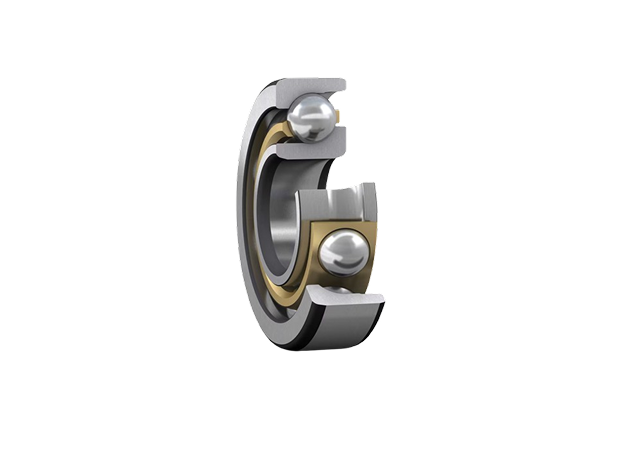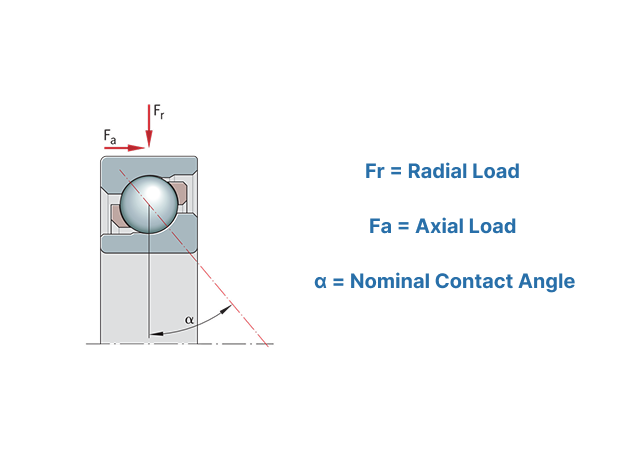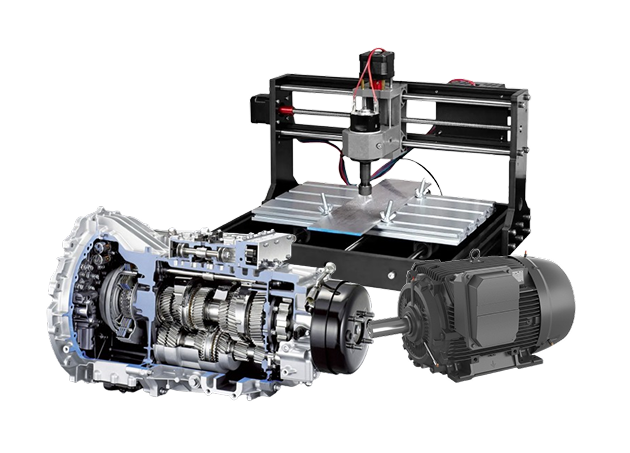Home / Product / Ball Bearings / Angular Contact Ball Bearings / Single Row Angular Contact Ball Bearings (General)
Single Row Angular Contact Ball Bearings (General)

Super precision angular contact ball bearings are engineered for high-speed, high-accuracy applications such as machine tools, aerospace systems, and robotics.
Loading...
Total 600 Results
Part Number
Interchangeable
System of Measurement
Contact Angle
For Load Direction
Bore Dia
Outer Dia
Width
External Diameter On Inner Ring (Small Side Face)
Dynamic Radial Load
Static Radial Load
Price($)
7205 BEY
SKF
Metric
40°
Angular Contact
25 mm
52 mm
15 mm
30.87 mm
3330 lbf
2092 lbf
10.47
7305 ACCBM
SKF
Metric
25°
Angular Contact
25 mm
62 mm
17 mm
32.26 mm
6525 lbf
3825 lbf
7305 BE-2RZP
SKF
Metric
40°
Angular Contact
25 mm
62 mm
17 mm
32.38 mm
5445 lbf
3150 lbf
18.37
7305 BECBM
SKF
Metric
40°
Angular Contact
25 mm
62 mm
17 mm
32.38 mm
5962 lbf
3442 lbf
20.3
7305 BECBP
SKF
Metric
40°
Angular Contact
25 mm
62 mm
17 mm
32.38 mm
5962 lbf
3442 lbf
20.44
7305 BECBPH
SKF
Metric
40°
Angular Contact
25 mm
62 mm
17 mm
32.38 mm
5962 lbf
3442 lbf
7305 BECBY
SKF
Metric
40°
Angular Contact
25 mm
62 mm
17 mm
32.38 mm
5962 lbf
3442 lbf
17.3
7305 BEGAP
SKF
Metric
40°
Angular Contact
25 mm
62 mm
17 mm
32.38 mm
5962 lbf
3442 lbf
18.84
7305 BEGBP
SKF
Metric
40°
Angular Contact
25 mm
62 mm
17 mm
32.38 mm
5962 lbf
3442 lbf
7305 BEGBY
SKF
Metric
40°
Angular Contact
25 mm
62 mm
17 mm
32.38 mm
5962 lbf
3442 lbf
17.3
7305 BEP
SKF
Metric
40°
Angular Contact
25 mm
62 mm
17 mm
32.38 mm
5445 lbf
3150 lbf
15.54
7405 BCBM
SKF
Metric
40°
Angular Contact
25 mm
80 mm
21 mm
40.32 mm
8932 lbf
5310 lbf
50.08
7405 BM
SKF
Metric
40°
Angular Contact
25 mm
80 mm
21 mm
40.32 mm
8932 lbf
5310 lbf
40.66
7206 ACCBM
SKF
Metric
25°
Angular Contact
30 mm
62 mm
16 mm
35.96 mm
6188 lbf
3892 lbf

Supports Combined Loads Efficiently
Single row angular contact ball bearing is a basic type of bearing, designed to accommodate both radial and significant axial loads simultaneously, but only in one direction for a single bearing.
The internal geometry features offset raceways creating a contact angle, enabling this crucial capability. This makes them an ideal choice for applications where both load types are present and need reliable management, such as in pumps and compressors.
Select these when simple radial bearings aren’t enough.
Variety of Contact Angles Available
These angular contact bearings are available with different standard contact angles (commonly 15°, 25°, 30°, 40°). Different contact angles result in different performance: larger angle provides higher axial load capacity but generally lower speed capability, while smaller angle offers higher speed potential but lower axial capacity.
Choose the contact angle that best balances the axial load magnitude and operational speed requirements for your specific machinery, ensuring optimal performance and lifespan.


Versatile Choice Among Bearing Types
As a widely used type of bearing, single row angular contact ball bearings offer a versatile solution for many industrial applications like gearboxes, electric motors, and machine tool components where combined loads occur.
While a double row angular contact ball bearing offers bidirectional axial support in one unit, single row bearings provide more flexibility in arrangement and preload control. They represent a reliable and cost-effective choice for numerous standard engineering challenges.
FREQUENTLY ASKED QUESTIONS

Why can a single bearing only take axial load one way?
Because the internal raceways are offset relative to each other, creating an angle. Load is transmitted along this angle, meaning axial force can only be properly supported in one direction based on how the bearing is oriented.
What's the main difference between single row angular contact ball bearings vs. double row angular contact ball bearing?
A single row bearing has one row of balls and handles axial load in one direction (when used alone).
A double row angular contact ball bearing has two rows, typically arranged internally like a DB pair, handling bidirectional axial loads in a single, more compact unit.
How do I choose the right contact angle when buying?
Consider your load ratio and speed. Higher axial load component suggests a larger angle (e.g., 40°). Higher speed requirements favor a smaller angle (e.g., 25°). Consult product detail pages.
How long will it take to ship after the payment?
We have sufficient inventory. Most orders will be shipped within 10 days or less. After the order is dispatched, you can track the logistics information at any time until the goods are signed for.